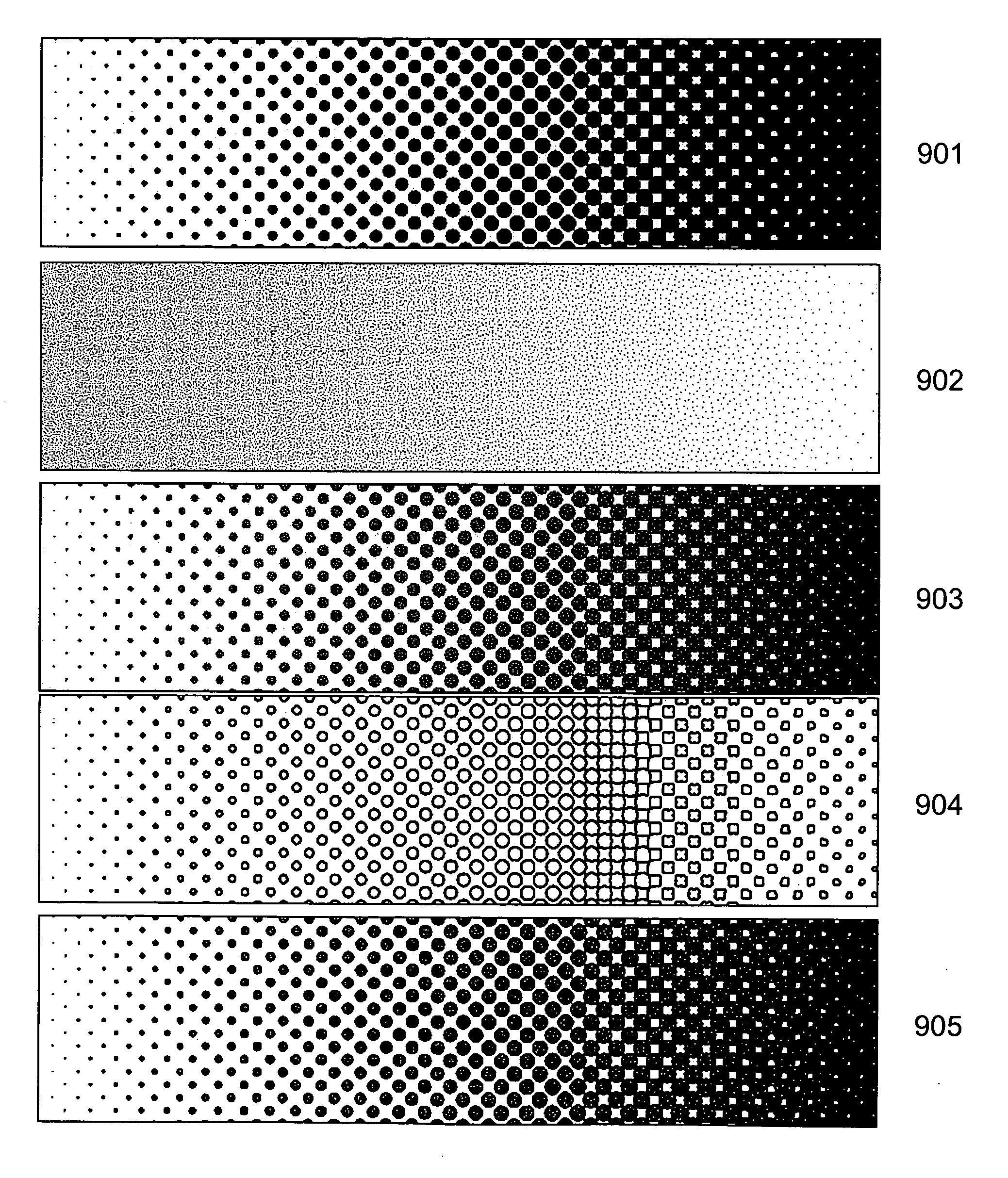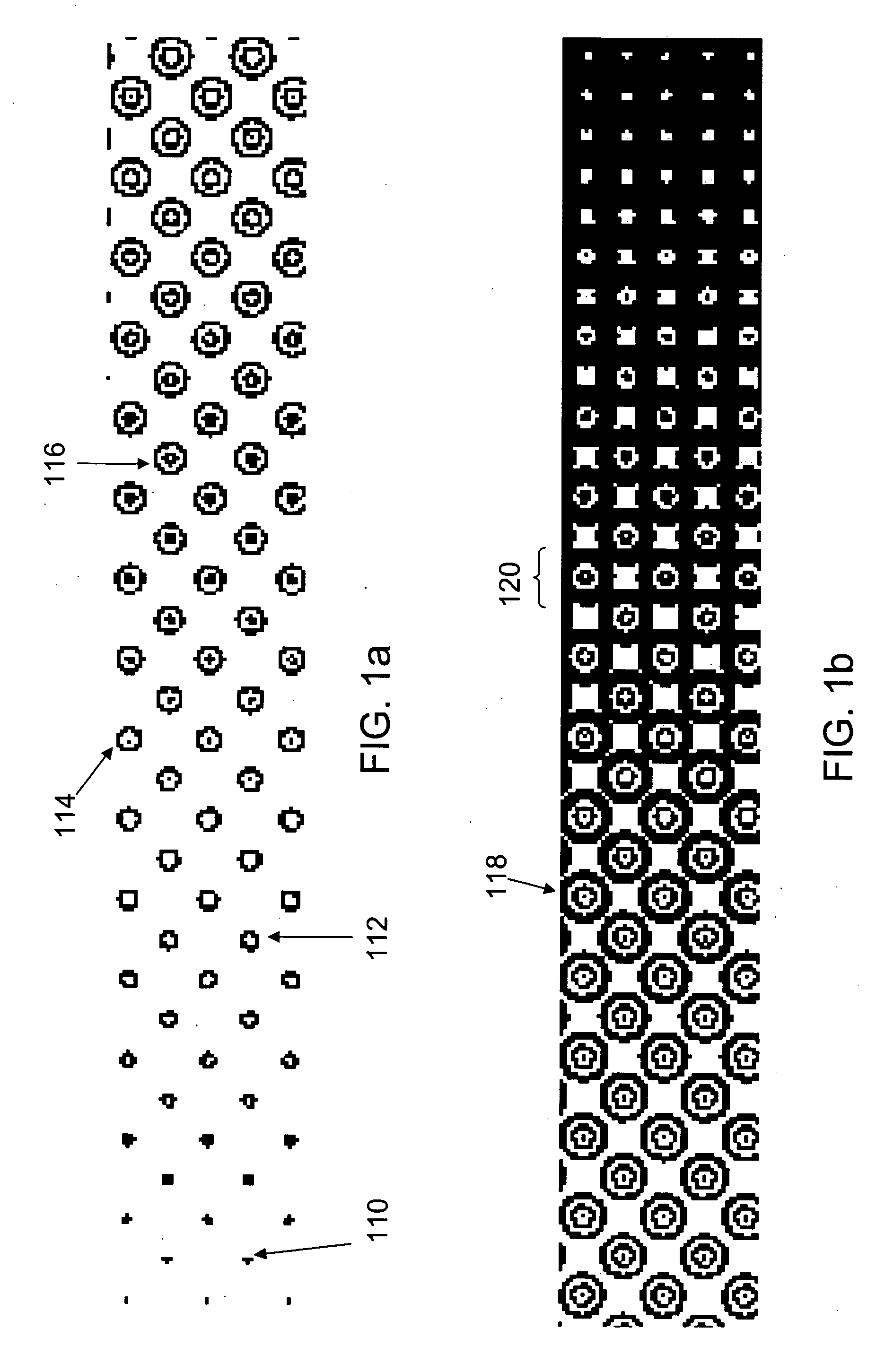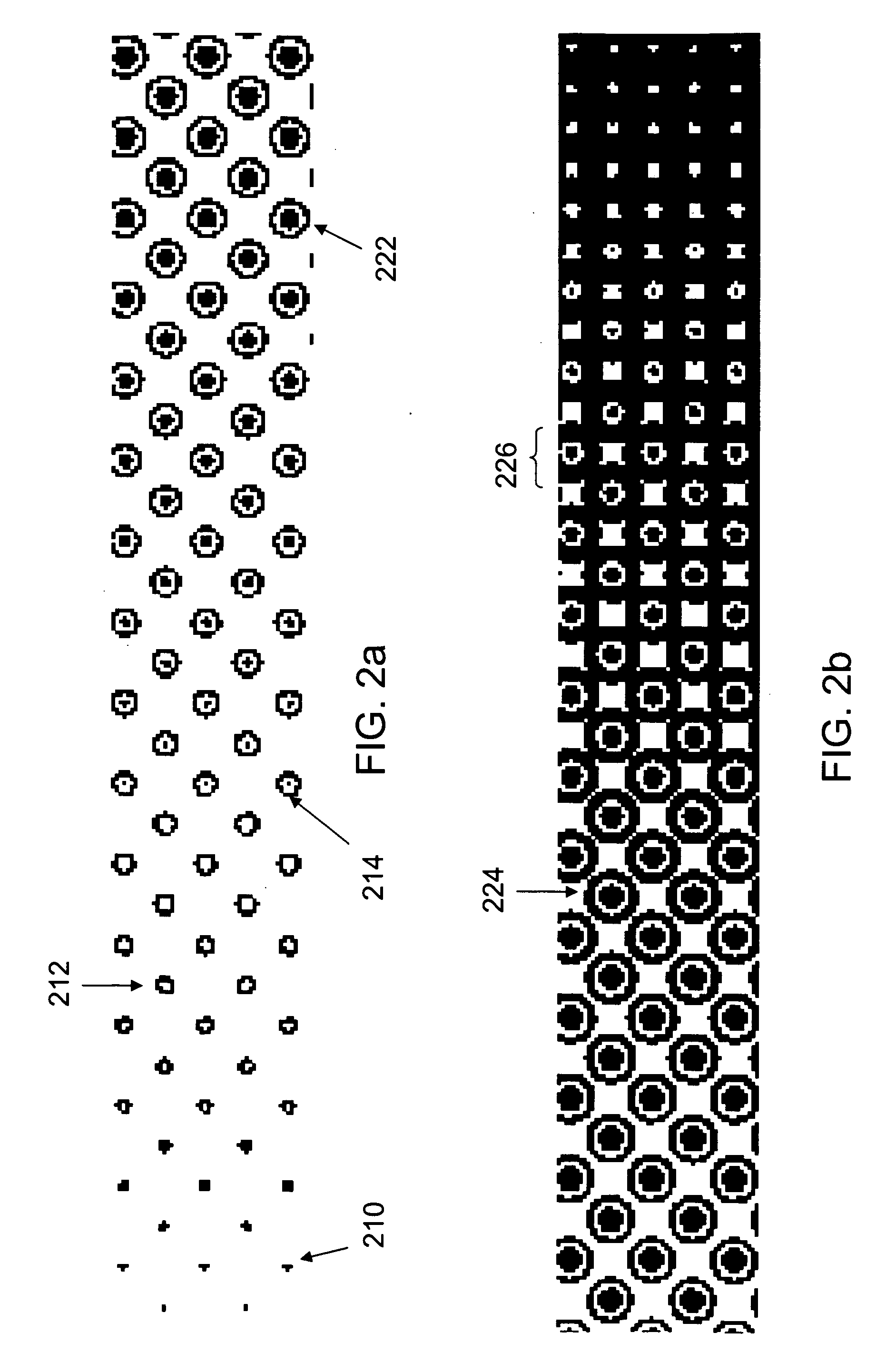Method of controlling ink film thickness on a printing plate
a printing plate and ink film technology, applied in the direction of foil printing, printing, instruments, etc., can solve the problems of loss of color saturation, loss of print stability, and tendency to form a mottled appearan
- Summary
- Abstract
- Description
- Claims
- Application Information
AI Technical Summary
Problems solved by technology
Method used
Image
Examples
Embodiment Construction
[0023] The inventors have found that excellent control of ink film thickness in AM printing patterns can be achieved by dividing the halftone dots into smaller or narrower ink-receptive portions. It has been found that a halftone dot composed of one or more smaller elements carries a lower ink film thickness than the same size (overall area) halftone dot in the form of a single solid element. Stated in other terms, the ink film thickness on a lithographic printing plate is related in an inverse way to the size of the image element (i.e., the ink-receptive feature) on the plate. For example, the ink film thickness may typically be about 10% of the width of the image element. Thus, a 20-micron element may carry a film thickness of about 2 microns, while a 40-micron element may carry a film about 4 microns thick.
[0024] Since the ink film thickness on the printed sheet is limited by the ink film thickness on the plate, it is generally desirable that the individual elements remain separ...
PUM
| Property | Measurement | Unit |
|---|---|---|
| Length | aaaaa | aaaaa |
| Fraction | aaaaa | aaaaa |
| Fraction | aaaaa | aaaaa |
Abstract
Description
Claims
Application Information
 Login to View More
Login to View More - R&D
- Intellectual Property
- Life Sciences
- Materials
- Tech Scout
- Unparalleled Data Quality
- Higher Quality Content
- 60% Fewer Hallucinations
Browse by: Latest US Patents, China's latest patents, Technical Efficacy Thesaurus, Application Domain, Technology Topic, Popular Technical Reports.
© 2025 PatSnap. All rights reserved.Legal|Privacy policy|Modern Slavery Act Transparency Statement|Sitemap|About US| Contact US: help@patsnap.com



